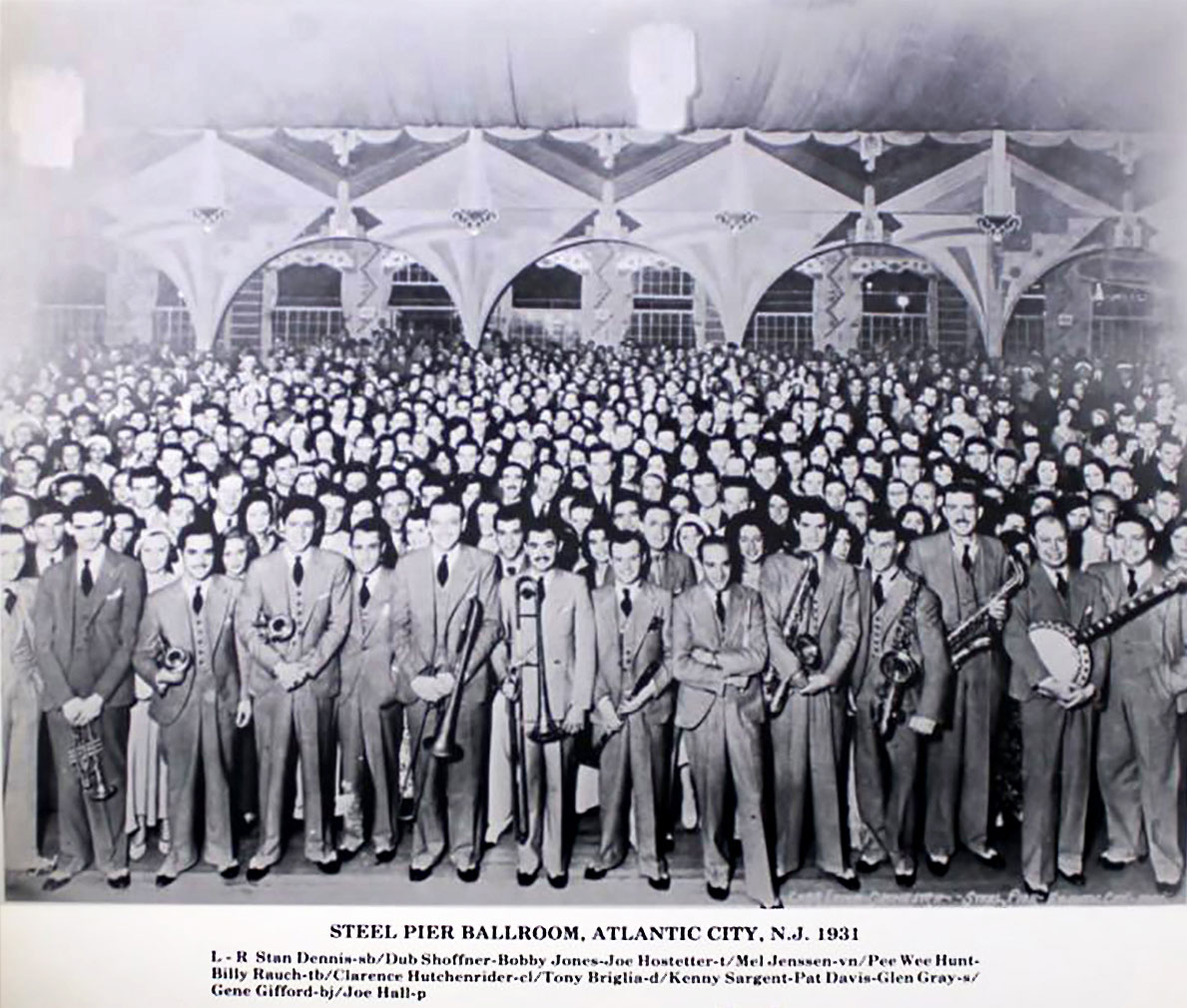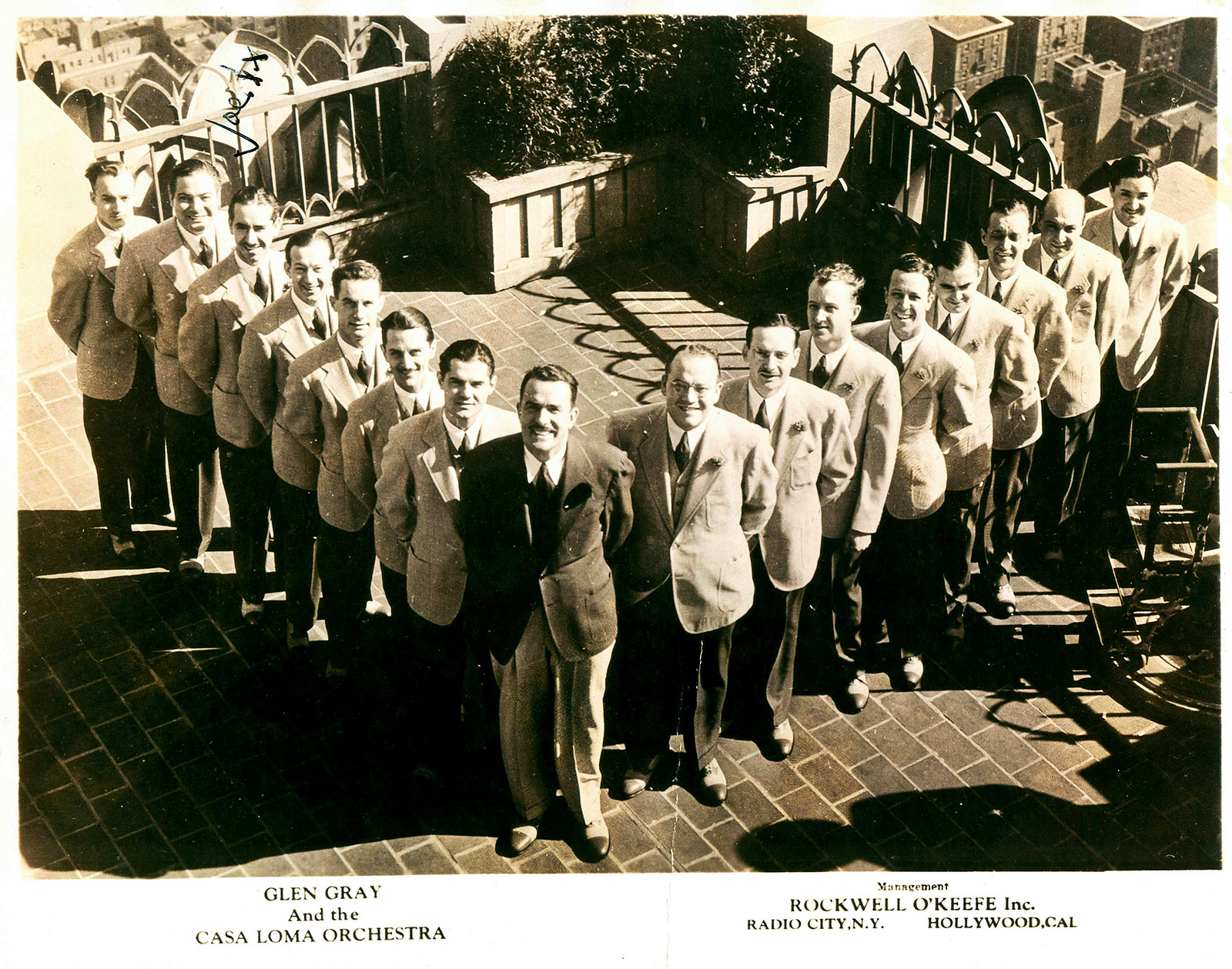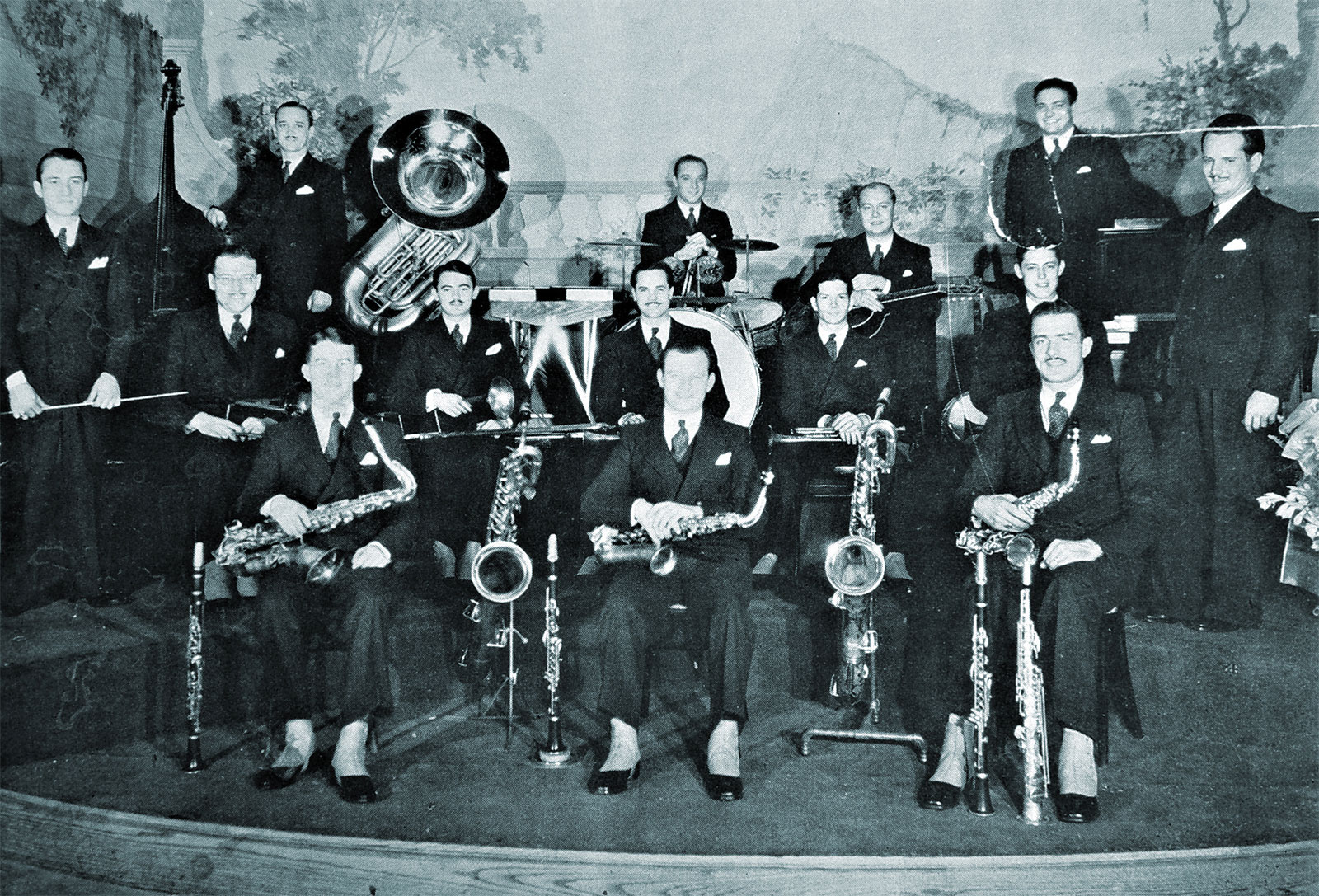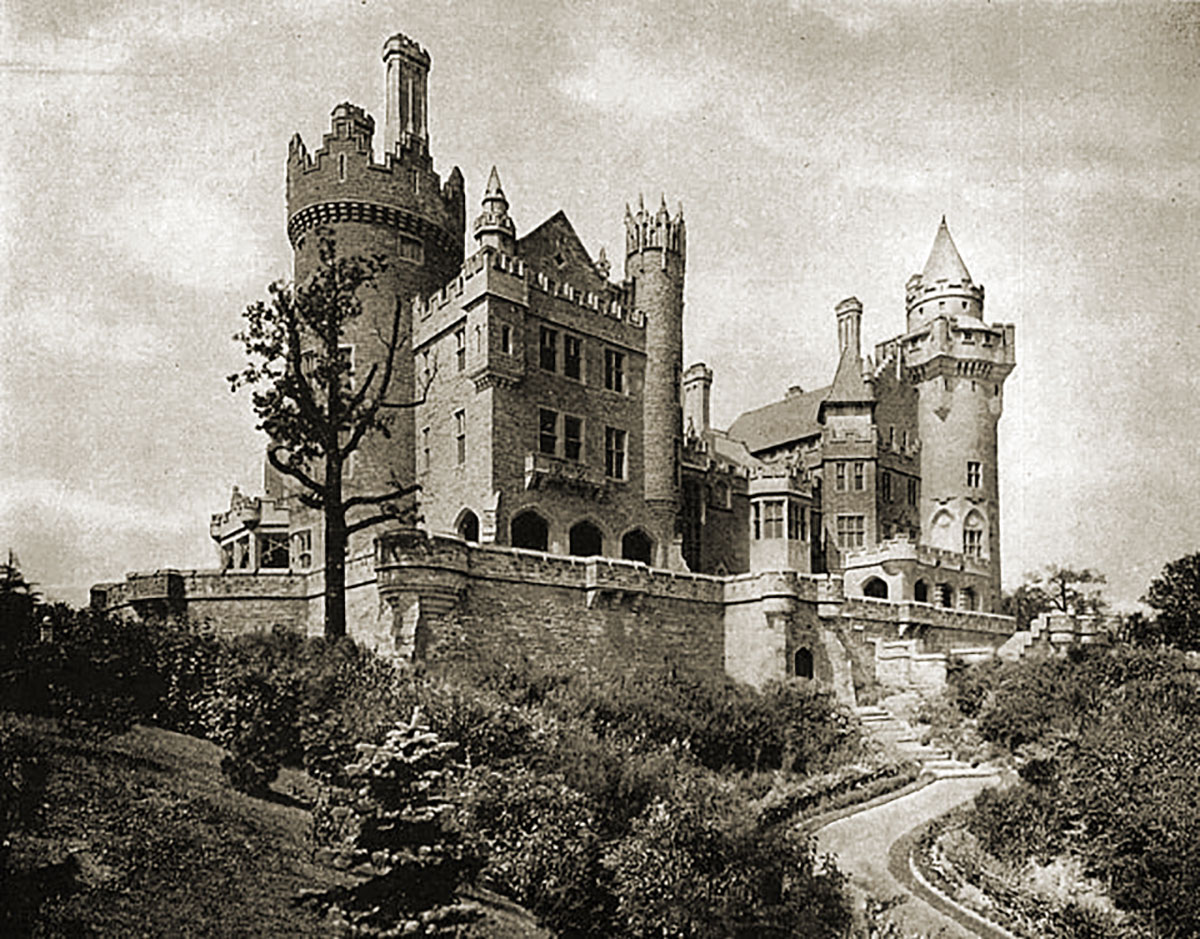Casa Loma Orchestra set the highest standards for excellent musicianship, superb arranging, collective spirit, classy presentation, romanticism and hard-driving dance rhythms. At the outset of the Swing Era, before 1936 and until the rise of Benny Goodman, Casa Loma was the premier popular orchestra playing hot jazz, sweet tunes, riff-based head arrangements and fully written scores.
A vanguard of the Swing Era, Casa Loma was one of the most danceable bands of all time and a rich source of original tunes. It was a fierce competitor in the big band battles of the 1930s, making records for OKeh, Brunswick, Victor and Decca Record Companies or their subsidiaries and international affiliates and among the most prolific of the era. They waxed nearly 450 sides between 1929-47.
Their distinctive and cohesive style jelled during 101 consecutive weeks of one-night stands in the Midwest during 1931-33. On the road in the worst days of the Great Depression, they flourished, despite the rough and tumble of touring on hazardous roads, blizzards and enduring an incident in which the entire band was arrested on suspicion of bank robbery.
Introducing Casa Loma, Swing Low, Maniacs Ball, Limehouse Blues

At the Steel Pier, Atlantic City, New Jersey, September 1931. Towards the center are trombone players Pee Wee Hunt, Billy Rauch and premier soloist, clarinet player Clarence Hutchenrider. To the far right are Glen Gray (alto sax) and arranger Gene Gifford (banjo).
A Popular Dance Band
In his landmark book, Lost Chords: White Musicians and their Contribution to Jazz, 1915-1945 (Oxford, 1999), noted jazz writer, researcher and musician Dick Sudhalter concluded:
“No band of those years was more frequently discussed, more widely admired or emulated . . . no other band of the day, whatever race, could rival it for popularity, precision and team spirit, or for the ability to bring dancers to the floor.”
Casa Loma Orchestra dominated the dance band field for the first half of the 1930s and was the topic of heated debates in the popular music press: Down Beat and Metronome magazines. It was a prolific source of delightful music and original tunes, particularly the deft arrangements of Gene Gifford who wrote their early hits and was succeeded by several talented scribes.
This was the first dance orchestra broadcasting regularly on network radio, launching the most popular showcase of Swing on radio. The premier broadcast of the of The Camel Caravan program on December 7, 1933 was a Casa Loma performance; they continued on the series until June 1936.
Casa Loma was unusual for being a group of white musicians who competed successfully with the black Jazz orchestras of Harlem for sheer drive and heat– one of the few Caucasian Swing bands admired by their African American competitors. Yet it was popular with mainstream audiences for sweet and romantic music, appearing dressed elegantly in tuxedos.
‘Reeked with Class’
“This orchestra reeked with class . . . both crisp and precise . . .”wrote contemporary observer George Piersol who became the band historian. He recalled his first impression in 1933:
“. . . the band programmed each set with versatility. They mixed such sentimental ballads as Kenny Sargent crooning ‘I Love You Truly,’ which brought squeals of delight from the female contingent in the crowd, to ending the set with a rousing ‘killer diller’ such as ‘Maniac’s Ball.’ When the program ended, we all filed out of the Steel Pier convinced that ‘Casa Loma Stomp’ had become the collegiate national anthem!”
Casa Loma Stomp – 1930
Future Casa Loma clarinet player Clarence Hutchenrider first heard the ensemble in its nascent form around 1929. He was impressed by their precise reading of intricately written charts and unity of sound, “it didn’t sound like any other band I’d ever heard . . . in a class by itself; something to remember.”
Their outstanding arranger Gene Gifford wrote both some of the hottest music of the 1930s and lushly romantic charts. Sudhalter suggests that Gifford’s superlative skills generating ‘tone paintings’ show “an even greater flair for ballads, drawing on a varied palette of instrumental colors” as heard in the hypnotic “Blue Prelude” or typified by their radio theme song, “Smoke Rings.”
Smoke Rings – 1932
Blue Prelude – 1933
Origins
Casa Loma Orchestra arose from the remnants of The Orange Blossoms, one of several bands run by impresario Gene Goldkette out of his Detroit office. Booked to play at a grand Toronto hotel called the Casa Loma, they were stranded when the hotel suddenly closed. To this day it remains unclear whether the band ever played the venue, if they played for a few days or weeks, or never performed there at all before the hotel failed as a commercial enterprise.
Stranded in Toronto, the musicians formed a collectively run corporation under the Casa Loma banner. For years it was run as co-operative business: the musicians had an active say in band membership, management and finances.
Maturing into a tough, finely-honed outfit, they were widely admired by their colleagues and competitors, white or black. The fact that there were no big stars in the ensemble strengthened its team spirit. One writer of the day called it, “the band that’s organized like a corporation and run like a college fraternity.”
Hotel Origins, You Ain’t Been Livin’ Right, Who’s Sorry Now
The Castle
The Casa Loma Castle in Toronto, Ontario, Canada is a fascinating story in itself. It was conceived and built by a Canadian insurance, real estate and industrial magnate, Sir Henry Pellatt. He spent five million dollars constructing a medieval manor on a hill above the city – Casa Loma meaning ‘house on a hill.’
The sprawling folly of gables, turrets and arches contained more than 100 rooms, 60 bathrooms, 5000 electrical lights, a shooting gallery, its own telephone system and the largest wine cellar in North America. It was briefly operated as a hotel, but has been owned by the City of Toronto since 1930, remaining one of its most spectacular tourist attractions.
Arranging, Buji, Chant of the Jungle, Ol’ Man River
- (Page 1 of 2)
- Next page →





